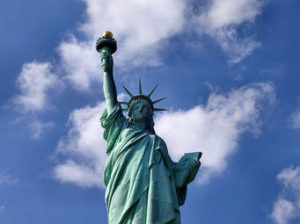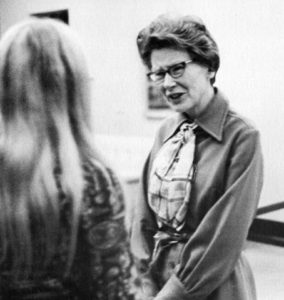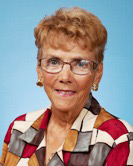
The U.S. has a long history of people coming to our shores for a better life.
The genius of our nation is that- despite the change immigrants bring, frightening some and breeding hostility – we have absorbed generation after generation of immigrants who have brought new thinking and ideas and the hard work required of people starting out in a new land. We are all better for this part of us. This is a story of immigration and success well over 150 years ago. It is not an easy story, forged by determination in the face of threats and reaction.
As the son of a hard working man who came to this country the year before I was born, I know that my family’s American story was not so different from those who came before and those who continue to come today. I thank those who came before and welcome those still to come.
____________________________________________
In 1846, the Potato Famine began in Ireland. From farms, cities and villages, Catholic immigrants fled to America as an alternative to starvation. Through the last years of the 1840’s, many thousands of new Americans arrived in Boston.
Those who survived the raging illness known as “ship fever” arrived in weak condition into an often hostile environment. Meetings protesting their presence were common; anti-immigrant fliers were distributed throughout the city of Boston.
It was into this environment that the first three Sisters of Notre Dame came. On Saturday evening, November 12, 1849 Sister Louis de Gonzague, Sister Mary Stanislaus and Sister Magdalene arrived in Boston. For safety, the long trip from Cincinnati was made not in religious habit but, as Sister Mary Stanislaus expressed it, in “old ladies’ costumes”.
They had come to Boston at the invitation of Bishop John Bernard Fitzpatrick and Father John McElroy, S.J. who had sent a petition to Sister Superior Louise and Bishop Purcell in Cincinnati. Father McElroy was then pastor of Saint Mary’s parish and was anxious for qualified teachers for the parish school. At the time, St. Mary’s School was the only Catholic school in the city. (The only earlier Catholic school had been moved to Charlestown in 1826 and was burned by an anti-Catholic mob in 1834.)
On Tuesday, November 15 the three Sisters began to teach the children of Saint Mary’s. Over 100 children came that first day to fill the two small classrooms.
By September, the little community of Sisters in Boston grew to seven to serve the rapidly growing numbers of pupils.
In 1852, Sister Superior Louise brought another group of five Sisters from Cincinnati. They arrived at St. Patrick’s parish in Lowell on September 21.
The first Superior of the Lowell foundation, Sister Desiree wrote:
“Our arrival was a source of rejoicing for the Catholic inhabitants. The house was surrounded by a great many good persons. Two days after our arrival we opened our school, without having it announced in the Church. We called together all the children who lived in the neighborhood and on the first day we had one hundred and fifty. Three days later our number was three hundred. As no school rooms had been prepared, the rooms in our house had to be used and we were obliged to send the little ones with their teacher to the basement of the church. Father O’Brien has commenced to build a school for the accommodation of the classes.”
“The 15th of June we were exposed to a great trial, at the door a group called the ‘Know-Nothings’ said they were determined to burn us. The alarm was so great that we were many nights in our clothes and our effects were packed for more than 15 days so we would be ready at the first word. The good Priest O’Brien had a guard of 60 men guarding the church and house for a month…the women and girls did not stay behind, they were charged with prayers for our defense. Little by little we got back to preparing our students.”
The Annals
Lowell, 1854
During her twenty-seven years as Superior, Sister Desiree made sure that the Sisters of Notre Dame not only educated the children of the poor but that the adult poor were fed as well. No one who came to the Sisters’ door was turned away.
As the years passed and the Lowell Foundation grew, a priest asked Sister Desiree – who, by now, had come to be called Good Mother Desiree – how she could erect so many buildings and be responsible for such a large family. She replied:
“Reverend Father, we do all this by the blessing God bestows on us in return for feeding the tramps.”
On May 8, 1854 Sister Mary Aloysius, Sister Mary Joseph, Sister Mary Clemence, Sister Stanislaus Kostka and Sister Mary Ignatius arrived from Cincinnati to begin the Roxbury Foundation. Since St. Joseph’s parish had no building for a school, the Sisters opened classes in the unfinished basement of the Church. They started out with forty students, amid the hammering of carpenters and other workers. By the following September, one hundred and thirty children were enrolled.
The Sisters came to Lawrence in 1859, opening a school at St. Mary’s on August 29. The three Sisters had over 300 girls the first day.
The first postulant from Lowell was Johanna Coughlin. She entered in Cincinnati on May 2, 1860 and, after a short stay, it was suggested that she return home for medical reasons. Besides an apparent frailty, the doctors said she was threatened with blindness. Before leaving, she asked for time to make a novena to Blessed Mother Julia for her cure. Her request was granted and when the doctors examined her after the novena, they declared her completely healthy with no danger of impending blindness. She took the religious habit with the name of Sister Mary Ignatia.
Also in 1859, two Sisters began teaching 180 children at Our Holy Redeemer in East Boston. By 1860, the Sisters’ community had grown to seven. In September of 1860, the seven Sisters who made the foundation in South Boston, came to the basement of Saints Peter and Paul Church expecting 300 children; twelve hundred were present. They began by instructing the children twelve years and older.
In 1867, the Sisters came to teach the children of Holy Name Parish in Chicopee and after a year added an evening school for the benefit of the girls who were obliged to work during the day. On to Worcester (St. John) in 1872, Cambridge in 1876, Springfield (Sacred Heart) in 1877, Salem (St. James) in 1878, Lynn (St. Mary’s) and Somerville (St. Ann’s) in 1881. Everywhere, the Sisters where welcomed with hundreds of students. Thousands of children were taught, sodalities were formed and buildings were built. The immigrant church in Massachusetts was flourishing and the Sisters of Notre Dame were offering education as a door to a better future.
In 1884, Sister Superior Louise, whose efforts spanned so much of the pioneering work in New England, completed arrangements for the Sisters house in Woburn. It was to be her last foundation. But the work did not stop. New waves of immigrants were coming to New England from many new countries and the Sisters who never had enough resources were becoming stretched even thinner. In the face of such difficulties, Sister Superior Louise’s successor, Sister Superior Julia sent seven Sisters to Waltham (St. Joseph’s) in 1888 and in 1891 six to open Saint Teresa’s school in Providence, Rhode Island.
Between 1900 and 1927 the Sisters continued to expand into new areas of Massachusetts. The began teaching in West Lynn (1902), Andover (1914), Hudson (1918), Dorchester (1921), Brighton (1924), Beverly (1927),West Newton (1927) and Tyngsboro (1927). In 1919, Emmanuel College, the first Catholic college for women in New England was established on the Fenway in Boston. Also during this period, six Sisters of Notre Dame left Waltham in 1924 to begin the first foundation in Okayama, Japan.
The New England journey of the Sisters of Notre Dame de Namur continued on the path of growth set in 1849 for well over a century, leading generations of children into the American mainstream and imparting faith and trust in a good and loving God.








